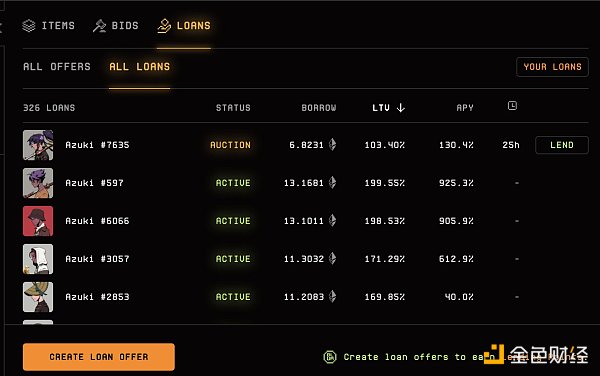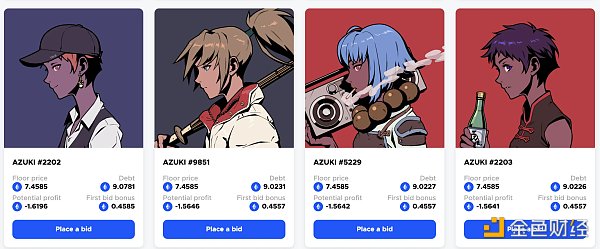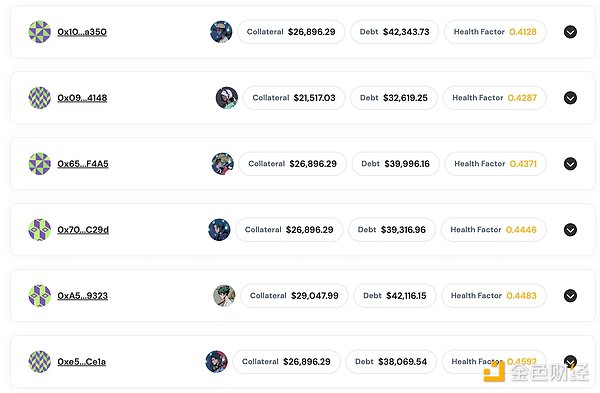As the Azuki incident continues to ferment, the NFT community and industry are facing challenges. Not only have major blue-chip NFT collections experienced varying degrees of decline, but many NFT lending platforms are also under pressure.
The market even further speculates that as NFT prices continue to fall, will it trigger a chain reaction of liquidation in lending, resulting in a new round of spiral trampling of NFT prices?
How Prosperous is NFT Lending?
With the development of NFTs, new projects in the entire NFTFi market are emerging, and various protocols are constantly emerging.
How many NFT lending platforms are there currently? As a relatively “just-needed” product in the NFT field, there are countless lending agreements. Alchemy alone has included 42 NFT lending products. Since most of the products are not popular, the data is difficult to obtain. This article does not use this list as the research object.
- Report on the Japanese Cryptocurrency Market: Industry Trends and Future Prospects Research
- Top 10 Cryptocurrency Market Events of the First Half of 2023
- Analyst: Bitcoin will experience a significant momentum in August if this situation occurs.
According to DeFiLlama’s data, currently 23 NFT lending protocols have been included and counted. As of the publication of this article, the total TVL of the 23 protocols has reached 189 million US dollars.
From a data perspective alone, this number is quite impressive. If FT is used for an unequal comparison, the total TVL of 264 FT (homogeneous tokens) lending protocols is as high as 14.7 billion US dollars, which is 77.7 times the TVL of NFT lending. The total market value of FT is approximately 12 trillion US dollars, which is 200 times the total market value of NFT of 6 billion US dollars.
Although there are numerous protocols, from a data perspective, only a few protocols are recognized by the market.
In NFT lending products, the TVL of 5 protocols has exceeded tens of millions of dollars, and the TVL of 4 protocols is between one million and tens of millions. The advantages of head protocols are obvious. The sum of the TVL of BlockingraSBlockingce and BendDAO is approximately 91 million US dollars, accounting for 48% of the total TVL of all NFT lending protocols.

Flexible and “Traditional” P2P Lending Injects Liquidity into Long-tail Assets
In May of this year, the famous NFT trading platform Blur introduced an NFT lending agreement called Blend, which entered a new track of the NFT market. Similar to Blur, NFTfi and Arcade are NFT lending protocols that use the P2P model.
Using NFTfi as an example, this protocol is a peer-to-peer (P2P) NFT lending protocol, which is currently the mainstream form of NFT lending.

NFTfi lending page
In this type of model, the borrower and lender can perform a 1-to-1 match on the platform, with a lender directly lending to a borrower.
P2P mode is closer to traditional world mortgage loans, and the platform only plays an intermediary role.
In P2P mode, all quotes and transactions are completed on the platform, and the collateral is held by the platform. If the borrower defaults, the platform will auction off the collateral. Because this mode is closer to “one-on-one bargaining,” the smooth trading of such protocols depends on a large number of users and is more “semi-artificial”. But the advantage is that its borrowing transactions are more diversified and more tolerant of long-tail assets.
But specifically, while they are all P2P lending, each one has its own differences.
Specifically, NFTfi is closer to traditional loans. The lender can set the loan amount, loan term, interest rate, etc. If the loan defaults, the borrower’s NFT assets will be pledged to the lender, and the lender will have the opportunity to acquire the NFT at a price lower than its market value.
Arcade is also an old lending project. The predecessor of this project was Blockingwn.fi. Similar to NFTfi, the lender needs to initiate a loan request, set the loan category, loan amount, repayment period, and loan interest rate, and sign a binding transaction based on this. In addition, Arcade also allows users to package multiple NFTs into a single NFT package and pledge the package as a single asset. It also has greater flexibility in loan agreements. At the end of June this year, a user packaged the FTX debt token minted by Found into an NFT and used it as collateral to borrow $7,500 on the protocol, with the debt worth $31,307.81.

Blur Lending loan list
Blend is a more special one in P2P lending. This protocol can be set without an expiration date, achieving the effect of “perpetual loan”. As long as there are lenders willing to borrow with collateral, Blend
Moreover, the most important thing is that after the liquidation occurs, NFTs will flow to the secondary market after being auctioned, rather than being handed over to the borrower. It is this difference that makes such models more “automated,” but also lays hidden dangers for the “spiral decline” of NFTs.
Both BendDAO and BlockingraSBlockingce use Chainlink oracles to provide the price feed, using OpenSea’s floor price as the price data.
JPEG’d is a unique project in the mainstream NFT lending space. The protocol does not adopt the conventional mode of depositing NFTs and borrowing ETH. Instead, it follows the MakerDAO model, allowing users to deposit NFTs as collateral and borrow synthetic stablecoins PUSd. Users can provide liquidity on the protocol using PUSd and earn interest. This model is called NFDP (Non-fungible debt positions). Similar to other peer-to-peer lending platforms, JPEG’d uses Chainlink oracles for price feeds.
Liquidation Triggers a Spiral Stampede?
When the collateral health falls below the required threshold, liquidation occurs.
After the Azuki incident, the rapid decline in Azuki prices caused the floor price of some NFTs to fall below the debt value. Taking BendDAO as an example, a total of 8 Azukis have defaulted, and collateral assets worth 59.67 ETH owe 72.47 ETH in debt.


BlockingraSBlockingce has also experienced similar situations. Multiple loans on the platform have experienced situations where the value of the collateral is less than the debt.

Currently, 13 liquidations (a total of 14 Azukis) have been suspended on the platform, with a total value of 359,900 yuan in collateral. BlockingraSBlockingce said that the suspension of liquidation is to give users more time to replenish liquidity, repay loans, and improve health, and will resume liquidation in the future. Currently, this batch of bad debts is about $100,000, and BlockingraSBlockingce said that there are enough reserve funds to deal with the sudden situation, and its reserve funds can fully cover it.
How terrifying can the downward spiral caused by the clearinghouse be? In April of this year, the cancellation of BAYC whale Franklin caused a lot of sighs. Franklin repeatedly used BendDAO to allocate a large amount of BAYC in the case of leverage and market decline. He once owned 61 BAYC and became the sixth largest holder of BAYC. His borrowing amount also reached an astonishing nearly 20,000 ETH. But under a series of erroneous operations, Franklin eventually moved towards a large loss and withdrew from the market.
Currently, it seems that the NFT lending market is booming, bringing more abundant liquidity and rich imagination space and usage scenarios to the market. However, as the financialization of NFT intensifies, the various financial risks inherent in the FT market will also brew in the NFT market. With the emergence of this round of large market fluctuations, how many risks will there be in the future NFT market?
Like what you're reading? Subscribe to our top stories.
We will continue to update Gambling Chain; if you have any questions or suggestions, please contact us!